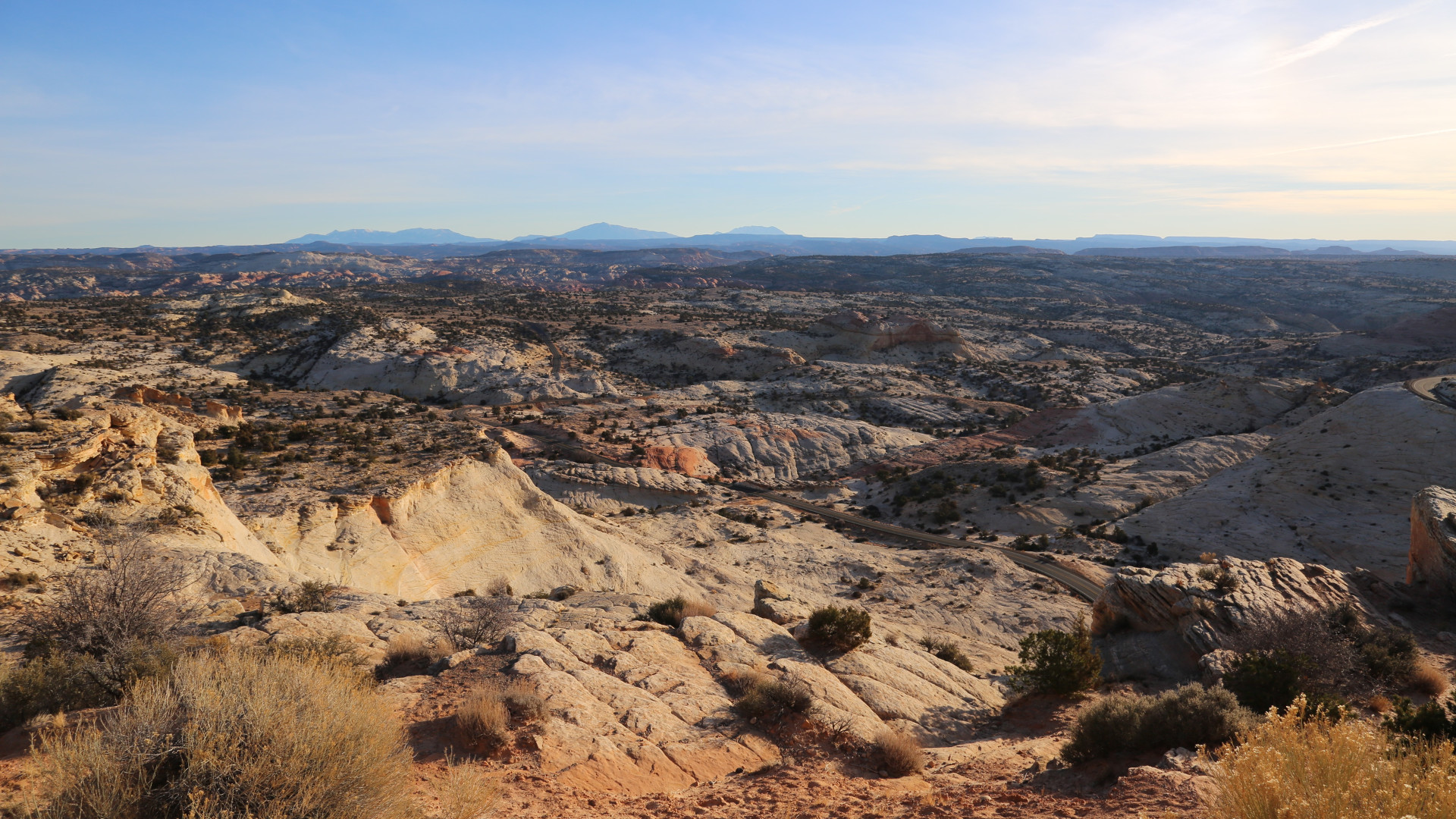The Trump administration this week released draft plans for mining and other development within lands recently removed from Bears Ears and Grand Staircase-Escalante national monuments. The plans, which are now open for public comment, identify more than 1,600 acres formerly attached to the latter monument as “identified for disposal” by lease or sale, indicating their potential for coal, oil, natural gas and uranium development.
The administration claims these initiatives — the latest in its work to accelerate energy development by slashing regulations and protections for national monuments —will stimulate the economy, but experts say the rush to sell off public lands to the fossil-fuel industry could actually have a long-term damaging economic impact.
Emily Lande, a senior campaign representative at Our Wild America campaign at Sierra Club, says it has been “well documented” that public lands provide a lot of economic benefits, but the Trump administration has not only disregarded the economic benefits of protecting public lands, it has also tried to cover them up.
“The administration has the mindset that the only economic benefit that comes from public lands is from energy development and mining,” she says.
The Washington Post reported the Trump administration’s cover-up in July, when documents accidentally released by the Department of the Interior — and retracted a day later — showed the agency’s officials deliberately dismissed evidence that national monuments boosted “gateway” towns’ economies and instead focused on emphasizing energy development and logging.
Gateway towns are typically small, rural communities adjacent to national parks and monuments. These communities are mostly supported by tourism revenues from lodging, restaurants and gas stations and rely heavily on public lands for their livelihoods.
Several studies show that America’s public lands played a crucial role in supporting gateway communities in many parts of the country.
Among them, a 2017 report by Headwaters Economics, a nonpartisan independent research center, showed that population, employment, personal and per capita income have gone up in communities adjacent to national monuments since those monuments have been designated.
Gateway communities around Grand Staircase-Escalante, Cascade-Siskiyou, Craters of the Moon, Grand Canyon Parashant and a number of other national monuments in the West expanded after the monuments have been created, the report found.
In addition to growing their populations, these communities also saw growth in employment and per capita income in the years following monuments’ designation.
Another report, from the Outdoor Industry Association, was released before Trump slashed Bears Ears and Grand Staircase-Escalante national monuments in Utah; it found that monuments across the country serve as important economic drivers.
Hundreds of millions of annual visitors to monuments, parks and other Interior Department sites contribute $887 billion to outdoor recreation industries that support 7.6 million jobs, according to the report.
A report by the Natural Resources Defense Council highlighted the dangers of Trump’s sweeping proposal to open up almost the entire U.S. coastline — home to 68 national parks — to oil and gas drilling.
According to the report, coastal national parks generated $5.7 billion in economic output, supported 59,517 jobs and attracted 84 million visitors in 2017.
Putting oil rigs right outside protected areas, or inside previously protected sites, will have an adverse effect on this national economic engine, Lande says.
“People don’t really want to go to parks and see an oil rig, that’s just not what they are there for,” she says. “That will have negative consequences for the local economies and for the places that are really dependent on those protected landscapes in order to keep a sustained, healthy economy.”
Ironically, rural voters who turned out heavily for Trump in the 2016 election could be the hardest hit by his environmental policies, as small communities often depend on the health of public lands for their long-term income.
Lande says a particularly egregious example of Zinke’s destructive public-land policies is the rollback of federal protections for Grand Staircase-Escalante National Monument in Utah in December 2017.
“I think it’s the prime example because the monument is so established in that community, and people really build their lives around it,” she says. “To undo that protection and to shrink the size of that monument… that really puts a threat and a lot of pressure on a local community.”
Utah has always been at the fore of the debate on energy and public lands because of the high number of protected landscapes in the southern part of the state, all of which are located next to areas leased for oil and gas development.
Along with Grand Staircase, Trump has also drastically cut Utah’s Bears Ears National Monument, which was designated by the Obama administration in December 2016, by 85 percent. Cascade-Siskiyou National Monument in Oregon and Gold Butte National Monument in Nevada are awaiting potential similar fates.
The larger economic impact of opening public lands to oil and gas would be felt across the country, as development and increased emissions would contribute to climate change, Lande says.
“You are going to feel that in a community, you are going to feel that in a number of wildfires, you are going to feel that in air pollution and water pollution and costs that come from that — all public-health impacts,” she says. “I think there are larger and longer-term economic impacts that will be felt across our country.”
National Monuments, Local Economies
In Utah local and state officials have vocally opposed Grand Staircase-Escalante National Monument ever since it was designated by President Bill Clinton in 1996. Once the Trump administration entered the White House, they doubled down on their rhetoric about federal overreach.
At the behest of Utah’s outgoing Sen. Orrin Hatch, Trump slashed the 1.9-million acre Grand Staircase-Escalante in Garfield and Kane counties by 900,000 acres. The move was meant to limit federal government’s control of local lands and give opportunities to the extracting industry to create jobs in the area.
But business owners in Garfield County, home of several gateway communities to Grand Staircase-Escalante, say tourism — not energy development — is the primary driver of the local economy.
One of those gateway towns is Boulder, Utah, which sits between the town of Escalante and Capitol Reef National Park and is praised for its pristine beauty. Surrounded by rugged southwestern landscapes, it’s one of the most isolated areas in the country, and business owners say visitors are attracted to its spectacular landscape and dark night skies adorned by the Milky Way.
Scott Berry, a co-owner of Boulder Mountain Lodge, says “the public demotion of Grand Staircase-Escalante National Monument will likely discourage individuals, families, and businesses from bringing new ideas, and new capital to the gateway communities.”
Berry says he saw this influx 24 years ago when he opened the lodge and tourists from other states and countries poured into the town, transforming it from an insular rural community into a prime outdoor destination, which at the time was free from the crowds common for many national parks.
“It improved the character of the community, which started to blossom and see itself as a part of the world,” Berry says.
Blake Spalding, a co-owner of Hell’s Backbone Grill, moved to Boulder from Flagstaff, Ariz., in 1999. She opened the restaurant the following year.
“We wouldn’t have opened the restaurant had the monument not been created,” Spalding says in a telephone interview.
The vision for Hell’s Backbone Grill was to support the monument. After opening the restaurant, Spalding authored two books that highlight her affinity for Utah’s public lands. The most recent, This Immeasurable Place: Food and Farming from the Edge of Wilderness, co-authored by her business partner Jen Castle, tells the story how they started the farm-to-table restaurant in the small, Mormon community.
“We are unequivocally for the monument — and if anything, it should be made larger, not reduced in half,” Spalding says.
Although her business is booming, Spalding says people have written to her about canceling their trips to the area in protest of Utah officials’ handling of the state’s national monuments.
Berry, of the Bounder Mountain Lodge, has also had reservations cancelled. He says he couldn’t tell if the reduction of the monument had an immediate impact on his business as his guests didn’t tell him why they decided to change their trips.
Berry and Spalding are not isolated cases. According to the NRDC report, Garfield and Kane counties, homes to the monument, experienced 24 percent job growth, a 32 percent increase in personal income and a 17 percent increase in per capita income between 2001 and 2015.
More recently, tourism tax dollars in Kane and Garfield counties increased 20.8 percent and 10.2 percent, respectively, between 2015 and 2016, according to the report.
Ironically, Berry argues that this growth actually fed opposition to the monument.
“These newcomers are bringing new ideas to what have always been small, insulated communities in the middle of nowhere, slowly changing the social landscape,” he says. “Not surprisingly, these changes have made traditional residents uneasy, and disagreement about the monument is the way that unease gets expressed.”
This unease was the key factor that has played into local government’s push for the reduction of the monument and claims that mining could bring better jobs than recreational tourism. Studies point to large deposits of coal in the Kaiporawits Plateau, an area rich in dinosaur fossils which has been cut from the monument by the Trump administration.
Four mining claims have been staked in the former Grand Staircase so far, but Berry calls local conversations about mining “wishful thinking” and questions whether mining in the region would ever be economically viable.
“Local residents are well aware of the talk about the possibility of new energy and mining projects in the area are ‘castles in the clouds’,” he says.
To Berry there’s only one product that the remote area near Grand Staircase-Escalante can market sustainably now and in the future: the wild, untrammeled, awe-inspiring landscape.
“Right now hundreds of families in Boulder, Escalante, Tropic and Kanab are building the foundations of a future economy based on this unique opportunity,” he says. “We, as locals, and the nation at large will we have to decide if we have the courage to step into this future, or choose instead to retreat into dreams of the past.”
© 2018 Daria Bachmann. All rights reserved.
Editor’s note: The plans to sell off some of the public lands formerly attached to Grand Staircase-Escalante were withdrawn two days after they were announced. The Bureau of Land Management has now been directed to “modify” the proposal.


